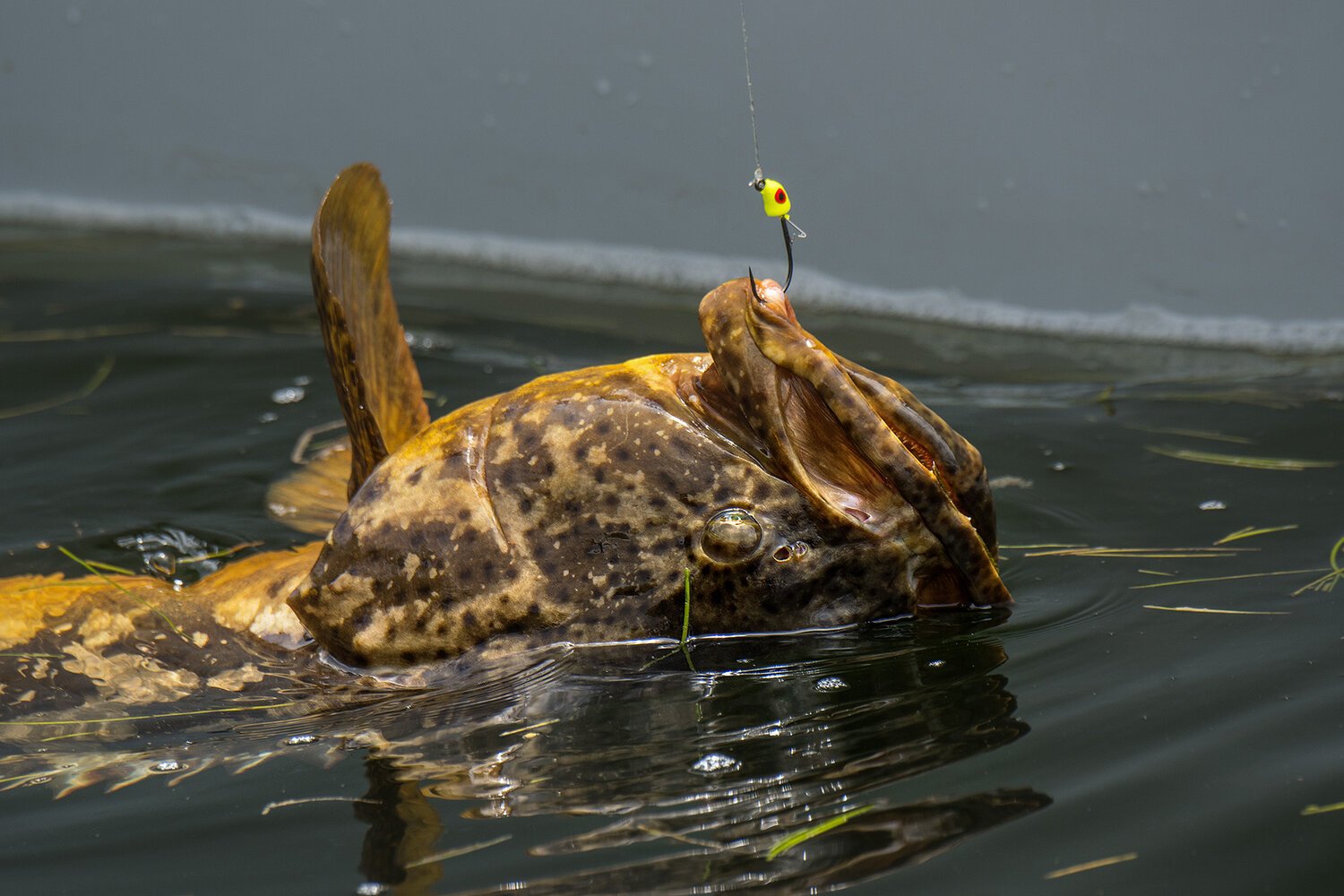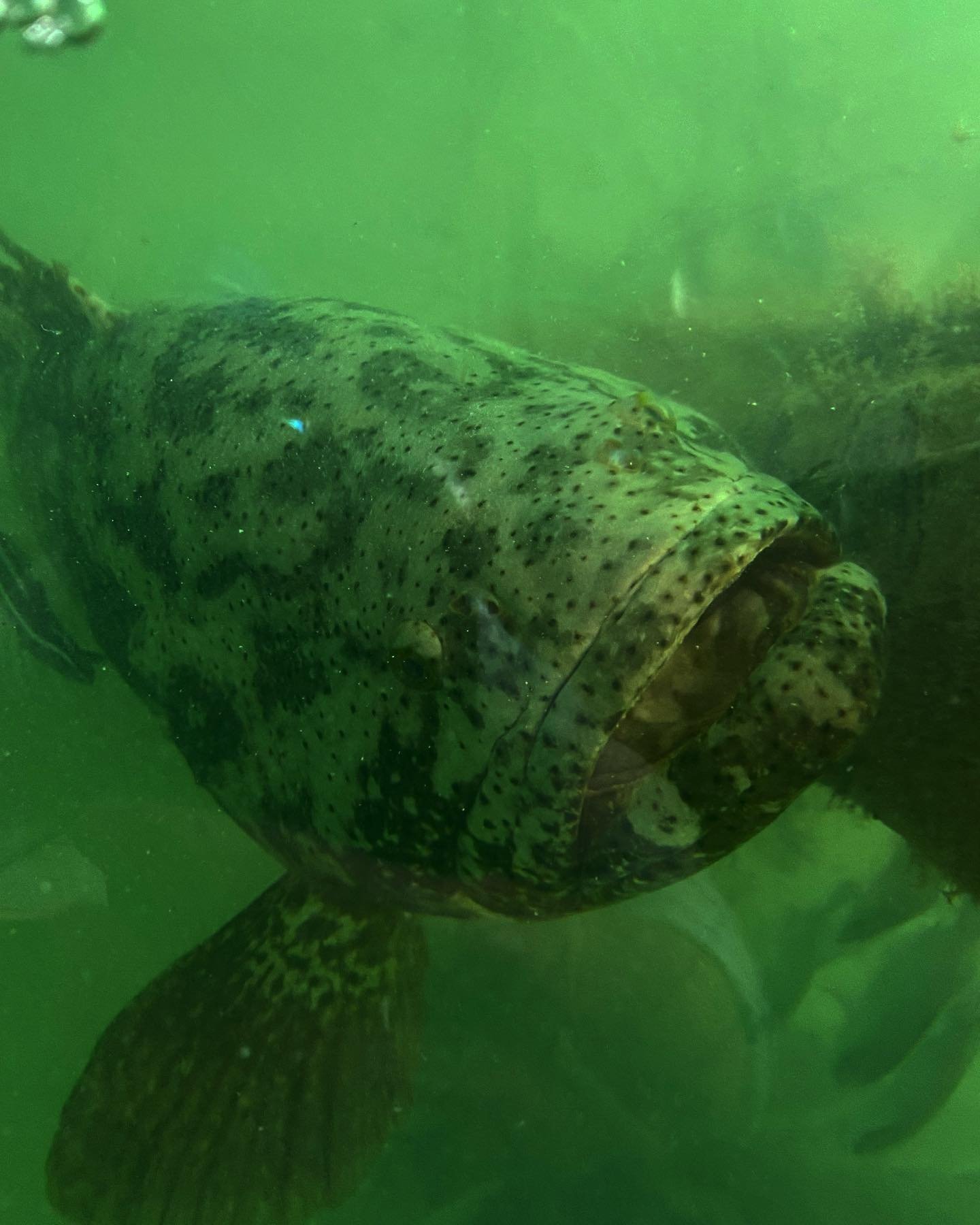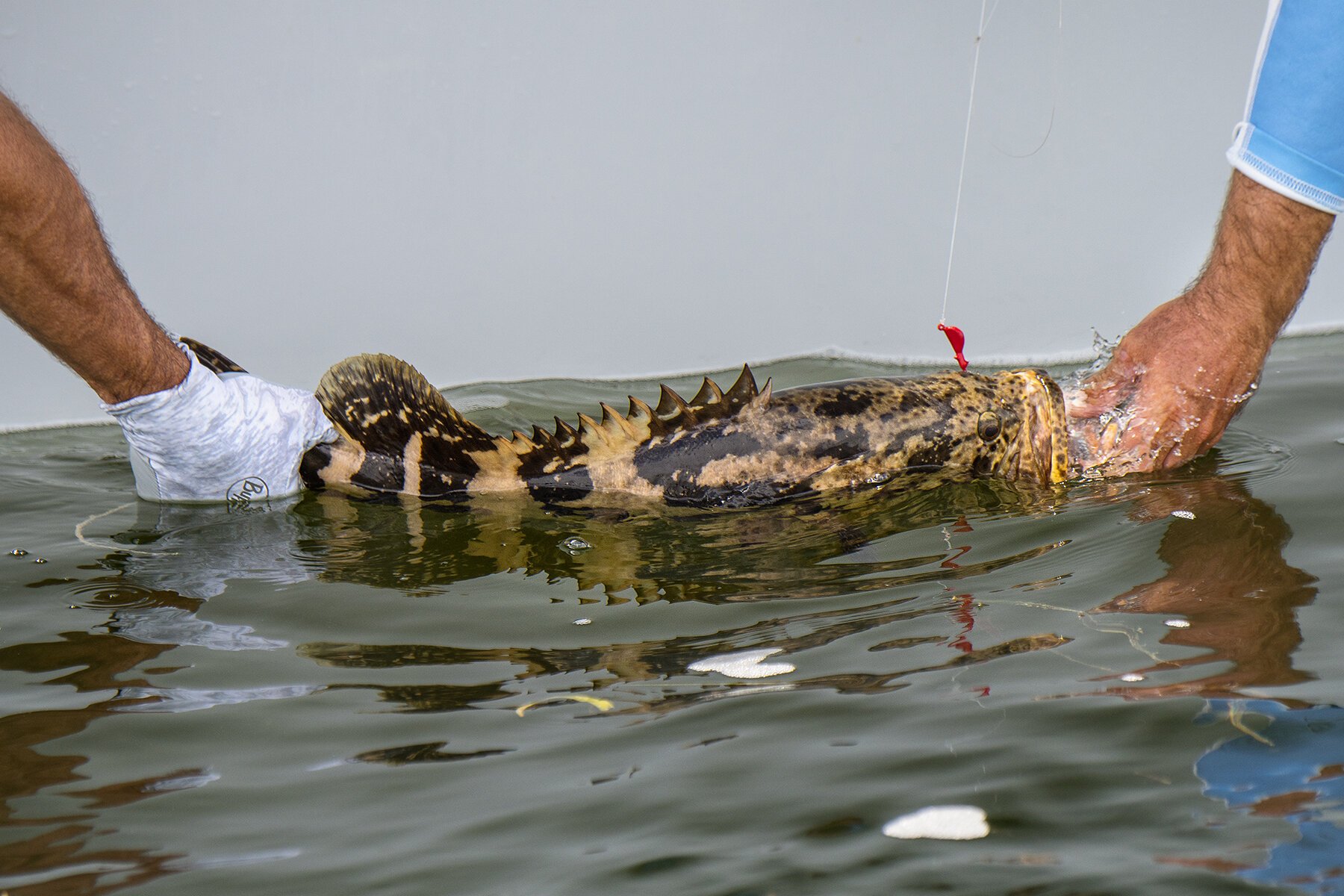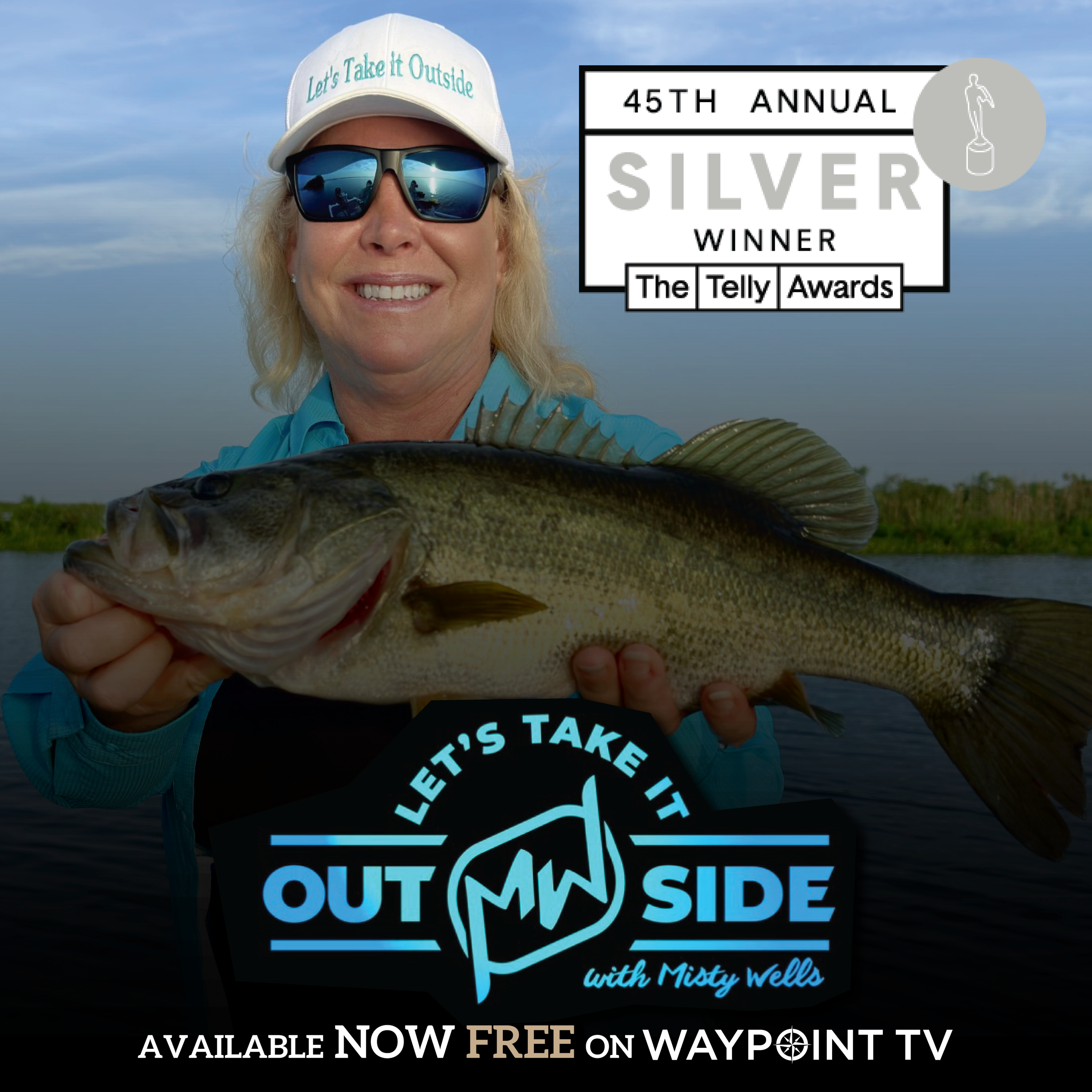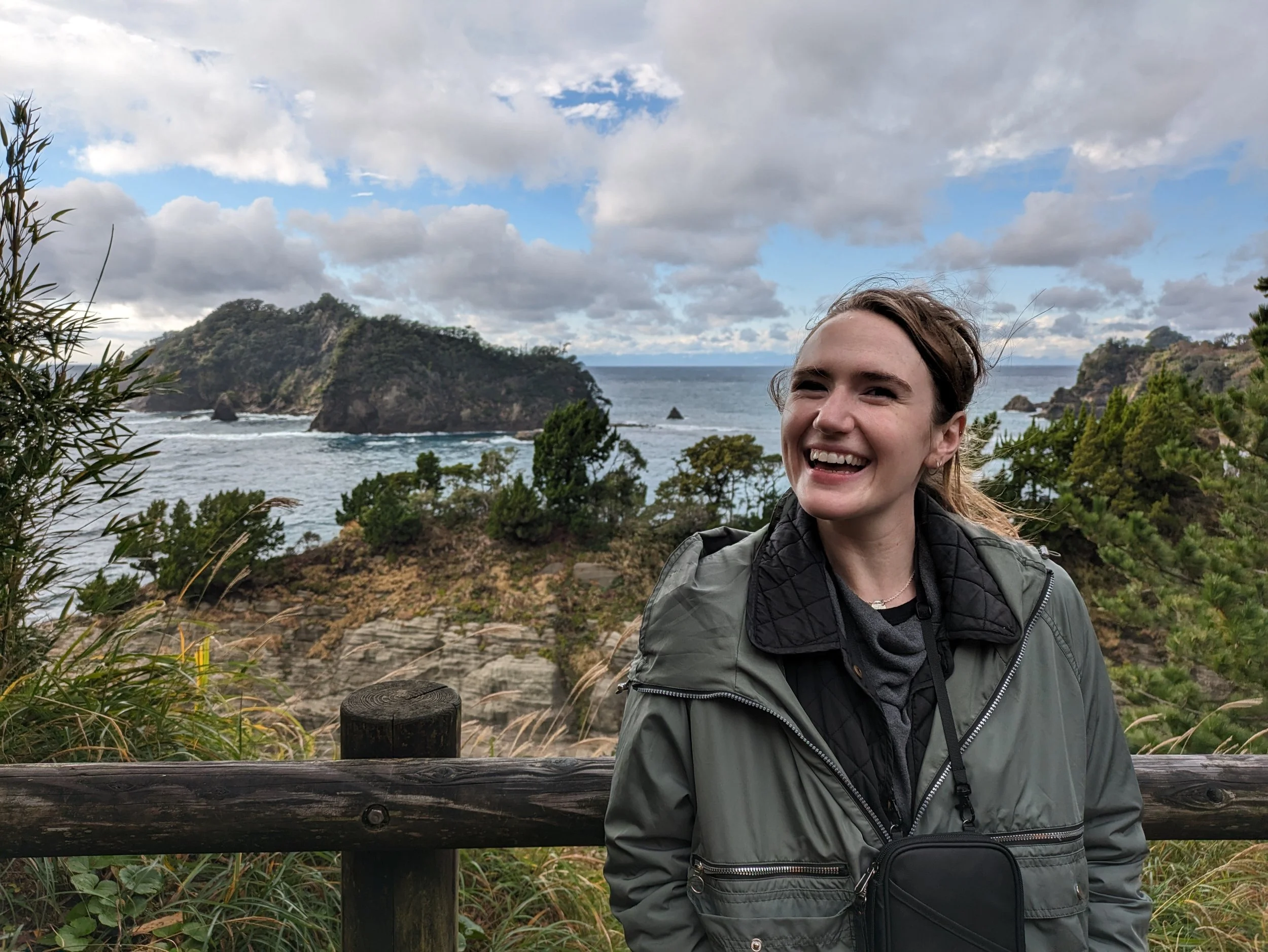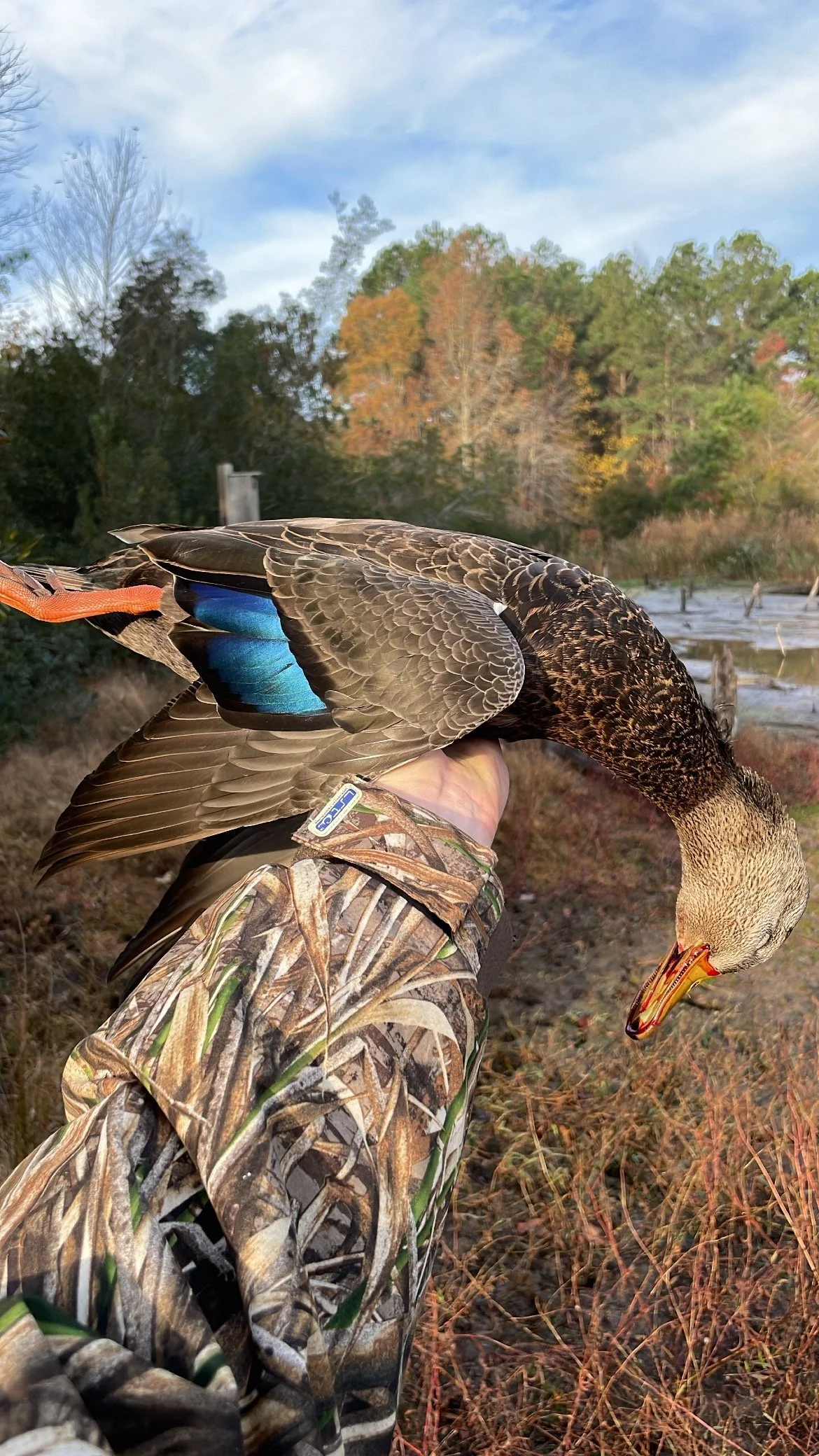Florida Approves the First Goliath Grouper Harvest in 32 Years
A recreational harvest of up to 200 Goliath Groupers via random-draw lottery will begin in state waters in the Spring of 2023. Quoted from the Florida Fish and Wildlife Conservation Commission’s website, the recreational harvest rules are as follows:
A recreational harvest of up to 200 goliath per year, with a maximum of 50 from Everglades National Park.
A required recreational goliath harvest permit and tag, issued via a random-draw lottery, to legally harvest a goliath ($150 for residents, $500 for non-residents).
Limiting harvest to one fish per person per open season with permit and tag, non-transferable.
A March 1 through May 31 season.
Allowable gear will be hook-and-line only.
A slot limit of 24 to 36 inches total length.
Harvest would be permitted in all state waters except those of Martin County south through the Atlantic coast of the Keys, all of the St. Lucie River and its tributaries, and Dry Tortugas National Park.
Post-harvest requirements, such as proper utilization of the harvest tag, reporting harvest data and submitting a fin clip for genetic analysis.
On an episode of the Tom Rowland Podcast, Tom sits down with Dr. Bob Ellis, a research scientist with the Fish and Wildlife Research Institute at St. Petersburg in the Marine Fisheries Biology Group, and Erica Burgess, the Section Leader for analysis and rulemaking the division of Marine Fisheries Management for FWC, to discuss the changes to the regulations and why they were made.
History of Goliath Grouper Harvest
In the 1950s through the 1980’s, Goliath Groupers were targeted heavily by both recreational and commercial anglers. The fishery became so severely overfished that FWC closed the fishery to harvest in 1990. Several other councils in charge of the regulations to federal and international waters also closed the fishery to harvest.
When these laws were made, Goliath Grouper populations were down to 5% of the pre-1950’s population. There was no clear goal to reach point x or y in the population numbers.
Considering a Harvest Season
Input from recreational anglers was one of the predominant factors into considering opening back up the fishery to harvest. The first thing to do when considering opening back up the Goliath Grouper fishery for harvest is to ask questions. The primary problem with asking these questions was the incomplete data set that FWP was using to answer the questions.
FWC realized that they will not be able to do a traditional fishery stock assessment, which takes data from the fish itself, commercial landings, and recreational landings. Because the fishery was closed, they didn’t have the same access to data as they would for something commonly harvested, like Mahi-Mahi or Red Snapper, so they had to set new metrics and organize a scientific fishing study.
The studies that FWC came up with to determine if harvest could be sustained includes a Everglades National Park creel survey, diver data survey, and a recreational angler survey. From these surveys, they were able to see positive signs of genetic diversity in the population, which was a large consideration in the decision to open up the harvest again.
Size Requirements for Harvest
The slot size of 24-36 inches for the harvest of Goliath Groupers was determined from the levels of mercury in the fish and the spawning age. Fish over 36 inches 4-7 years old. While Goliath Groupers can live to over 30 years old and are predatory fish, meaning that the older they get, the more mercury will ultimately be absorbed into their flesh.
We know more about the fish in the 24-36 inch range, largely from the Everglades National Park Creel Survey. Juvenile fish will grow to maturity (over 36 inches) in the estuaries, where scientists have better access to more concentrated populations. When a young Goliath Grouper grows to 36 inches, that is about the time that it will go offshore to the reefs to fully mature.
In order to maintain the population of the fish, we need as many older spawning age fish that we can get. We don’t have as many old, large fish in the population as FWC would like to have, and the population appears to be truncated towards younger fish, allowing a conservative number of younger fish to be harvested from the population.
Cost of the Permit
Scientists will enlist the help of the permit holders to gather more data on the Goliath Grouper population. The permit will cost $150 for residents and $500 for non-residents, with a $10 application fee. Included in the permit cost is a fin clip kit that FWC will require permit holders to send back to them for analysis. Part of the cost of the permit will go to this kit.
The fin kit will allow FWC to use the data in their genetics study to understand the diversity of the population and the sex. Stable isotope analysis will also give scientists information about where the fish was on the food web.
A Story of Conservation
Like the Buffalo of the West, the Whitetail Deer, and the Wild Turkey, the Goliath Grouper population has rebounded from a mere 5% of their population in the 1950’s to the numbers they have today. Conservation and regulatory organizations like FWP have gallantly put in the effort to make sure that these fish are around for generations to come.
Even though conservation is an uphill battle as you face habitat loss, fishing pressure, poaching, conflicting interests, and politics, rebounding a previously endangered population to a stable population is cause for massive celebration.
The line gets fuzzy and people start to disagree on when the timing is right to reintroduce the harvesting of the previously endangered animal that now has a stable population. With the Goliath Grouper, we saw divers have the greatest concerns over the reintroduced harvest season. With the Grizzly Bears in the Greater Yellowstone Ecosystem, we see considerable outcry against a harvest season from those with emotional attachments from the anthropomorphization of the bear and certain conservation organizations. There will always be those that oppose and those that are for a new harvest season.
Like we saw in the Goliath Grouper case, FWC did not set a population goal of x or y for the population to rebound and the harvest season opening up again, so there was a large amount of back and forth before we can decide on that population goal after the fact. Setting population goals for the reintroduction of harvest seasons for fish or game can help clear the mud on some issues. Regardless, the conservation story of the Goliath Grouper is one that we can learn from but should take a moment to celebrate.
Listen to the full episode of the Tom Rowland Podcast with Dr. Bob Ellis and Erica Burgess or watch episodes of Saltwater Experience on Waypoint.
About the Author
Turner Rowland was born in Key West, Florida and has an avid passion for inshore and offshore fishing. After moving to Tennessee early in life, he began a life-long fascination with wildlife, hunting, and fishing that has taken him around the world to places like Bolivia, Christmas Island, Alberta, South Africa, Zimbabwe, and Zambeze. He currently resides in Bozeman, MT where he is passionate about elk, deer, turkey, duck, antelope, and bear hunting, while also chasing after big trout on the local rivers and heading down to Key West, Florida to fly fish every chance he can.


